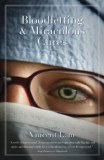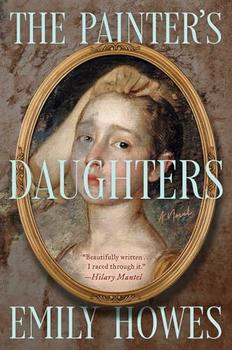Reading Guide Questions

Please be aware that this discussion guide will contain spoilers!
- In this book, it might not seem that medical school is designed to
foster individualism. When are there moments in which the doctors,
the professionals, reveal their personal self?
- What events root these stories in a particular time? Do you see
references
to outside news? What about SARS? Does the intense focus
of the stories capture the funneled lives of physicians, especially in
the E.R. and obstetrics?
- What does it mean to be Chinese in Bloodletting & Miraculous Cures? Is it even relevant most of the time? The
characters are doctors and people with little sense of their immigrant
background. However, when are the few times that being
Chinese is made explicit?
- In "Take All of Murphy," the anatomy demonstrator tells the
medical students, "This fine cadaver is your first patient. Dignity
and decorum are crucial. You must be mindful of this gift you
are given, and treat your patient nobly" (p. 34). These bodies are
volunteers, not body-snatched or "people from the jails or found
dead in fights or ditches" (p. 36) as for earlier generations of
anatomy students. How do Ming's and Sri's attitudes in this class
differ? Why does Sri say, "You should respect a man's symbols" (p. 43)?
- Why do you think the Mark 16 segment is part of the "Murphy"
story? What other links between religion and medicine do you see
in the book? The author, Vincent Lam, has said that "medicine
and narrative and spirituality intersect"; presumably, he means in
his writing as well as in his life. The proposed baptism of Yeh Yeh
in "A Long Migration" is one explicit infusion of religion. See
pages 109 and 116 for marvelous passages about this old reprobate
weighing the odds of a deathbed conversion. Otherwise do you
find it a secular society the doctors inhabit?
- Much of the book is about initiation. Is it the reader's initiation as
well as the doctors' in this no-holds-barred odyssey into the world
of medicine?
- Lam is a highly skilled storyteller. How would you describe his
writing style? What are the methods he uses to interweave horrific
events with small human moments, balancing despair and love,
grimness and humor? In "Eli" there is a surreal duet of doctor and
patient, both shouting at once, neither, of course, listening (see p.
171). How is that passage a microcosm of the story as a whole?
Another effective device Lam uses is the silent response, revealing
the thoughts of doctors as they deal with patients. Look at "Afterwards"
for Sri's internal dialogue. In another story, "An Insistent
Tide," why is Janice vacillating between the beach and her baby's
delivery? Dreams, laughing gas, extraordinary pain—how are
these ideas connected in Lam's experimental prose?
- Several of Lam's stories are so rich that they could be novels in
themselves. Which ones would you put in this category? Perhaps "Night Flight"?
"Winston"? "How to Get into Medical School,
Part II"? Does Fitzgerald's obsession with Ming take on a clinical
life of its own? "For months now, Fitzgerald's mind had alternated
between studying and allowing his speculations to spin like wheels
stuck in a rutted path of Ming and medicine, digging the tracks
deeper and deeper" (p. 67). This story includes the apocalyptic
bike accident when Fitzgerald is sure he is about to die. Does the
reader feel Fitz is spared for something else?
- Further in the same story, in his med school interview,
". . . McCarthy asked him what quality he felt was most important
in a physician. Trust is most crucial, said Fitzgerald" (p. 73).
How is this statement ironic, juxtaposed with the Karl-Fitz event
that follows? What is the poetic justice in Fitz's elevator confrontation
with Karl? Is this the end of their story? What is the
flick of the serpent's tail in Karl's last warning (p. 75)?
- How does the absolute end of the Ming-Fitzgerald drama provide
one of the moments of grace in the book? "He closed his eyes, and
the sun was still bright through his eyelids. . . . His eyes were still
closed and Fitzgerald could hear the sprinklers come to life closer
and closer to him. He lay on his back and waited for them to swing
around and spatter him with cool water" (p. 88). Are there other
clear, cleansing moments later for Fitzgerald that are not fueled by
alcohol?
- Writer Joyce Carol Oates says, "Tragedy always upholds the
human spirit because it is an exploration of human nature in
terms of its strengths. One simply cannot know strengths unless
suffering, misfortune, and violence are explored quite frankly by
the writer." Does this concept help us understand the characters
and events in Bloodletting & Miraculous Cures? Discuss
how some of the patients, doctors, and survivors emerge from
suffering and violence.
- One of the most provocative stories is "Winston." Is this psycho-mystery
resolved at the end? Or does it metamorphose into a new
level? Sri says, about Winston, "His thought process is at times tangential"
(p. 124). Is the whole story tangential? A kind of circular nonreasoning? Dr. Miniadis is a tour de force, a loony-perverse
representative of the "sane." Are you reminded of the 1966
French film "King of Hearts" or "One Flew over the Cuckoo's
Nest"? Dr. Miniadis says to Sri, "This is the dilemma, to build a
rapport, to allow the legitimacy of experience, but never to speak
of what is NOT real as if it were" (p. 126). Is the Halloween party
a real Saturnalian blowout? Or does Winston imagine it all? Why
is Winston listening in on his upstairs neighbors through a grate
on his own floor?
- Lam's glossary at the end defines psychosis as a mental disturbance
in which the patient loses contact with reality. Starting with Dr. Miniadis, wearing her earphones, listening to Smetana, and beaming
manically at her student-doctor, we wonder at her exhortation,
"Drink it in! Take full advantage of this educational opportunity"
(p. 125). What does Sri make of her term of art, "counter-transference"?
Earlier, Sri has said, "Some think of illness as a kind of poison"
(p. 121). How does this image pervade his visit to Adrienne?
Does it suggest Ionesco and Beckett and the Comedy of the
Absurd?
- How is "Eli" a terrifying story on many levels? The emergency
room has never been more vivid: "The crying of the child, the belligerence
of drunkenness, the thin whine of a failed suicide. The
noise and presence fills the waiting room, a condensation of the
city's private screaming made public" (p. 165). How do we feel
about Fitzgerald's complicity with the police? (". . . the game: You
do your thing and we'll do ours…cops and robbers and doctors" p.
167). What about his acts of revenge against both patient and officers?
Is there enough moral reprehensibility to go around? "Benevolence
and cruelty are separated only by a veneer of whim which,
in medicine, we understand" (p. 168). Do we see all three sides—
patient, police, doctor—reaching a lowest common denominator?
- "The evil of blood is like a malevolent thought. Once it touches,
the very suspicion of its presence causes it to grow, to distort
motive and action, and to propagate its own dark, spreading reach"
(p. 181). How do these words invoke the menace of the story "Eli"? What shocking actions succeed this quotation? Are we at all
sympathetic? How do you react to the last line, "I didn't look to see
the faces of the officers in that car" (p. 186)?
- "Afterwards" is a Rashomon story, told from multiple points of
view. The vee-fib victim, Mr. Wilhelm, was a sedentary, smoking
diabetic. "Sri always felt relief to learn that a deceased person's end
was predicted by his life. It made it a happens-to-someone-else
event, a bound–to-happen circumstance. There was less to explain,
or understand" (p. 192). Does this attitude correlate with what else
you know about Sri? Whose are the other points of view in the story?
- In "Afterwards," as in some of the other stories, the line is thin
between farce and tragedy. Is this the nature of the human condition?
What are some of these moments? The prostitute too otherwise
engaged to hear the inspectors enter? Mrs. Wilhelm clutching
the old fedora? The debate about the nature of "the parlor"? "There is a back room. For ten years your father hasn't touched me.
Said it was his diabetes, that he couldn't do it" (p. 197). Where else
has Lam widened his scope, giving us the story behind the story?
Unless otherwise stated, this discussion guide is reprinted with the permission of Weinstein Books.
Any page references refer to a USA edition of the book, usually the trade paperback version, and may vary in other editions.

 Book Reviewed by:
Book Reviewed by:


